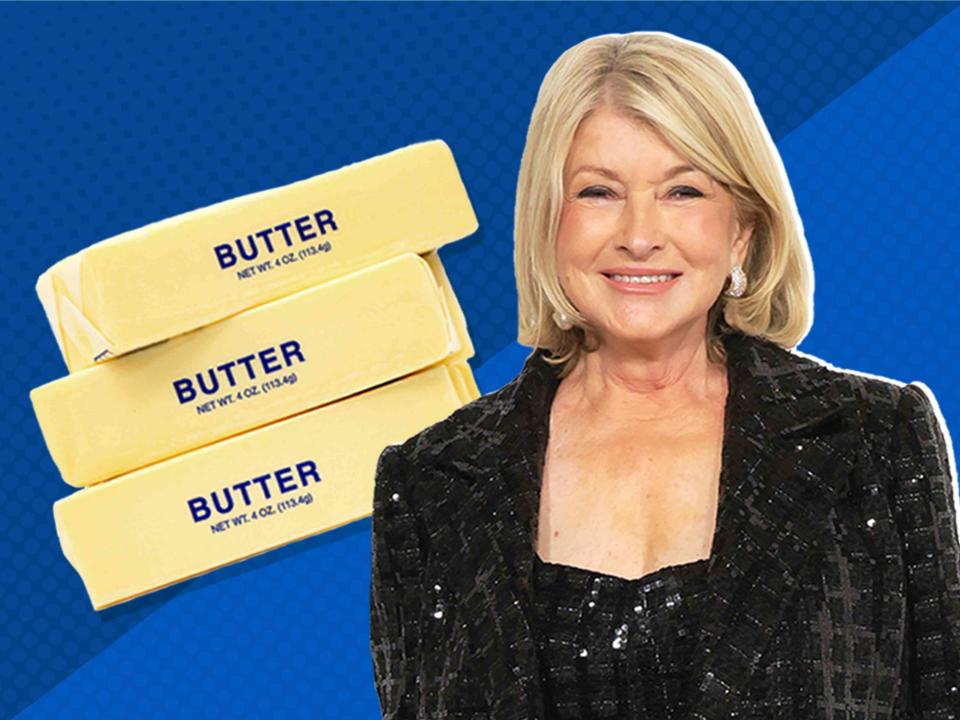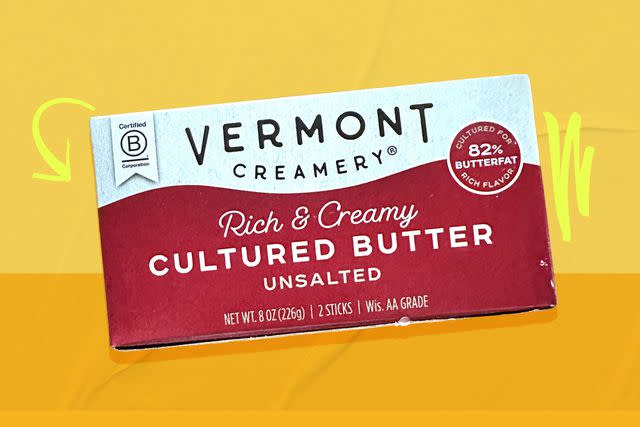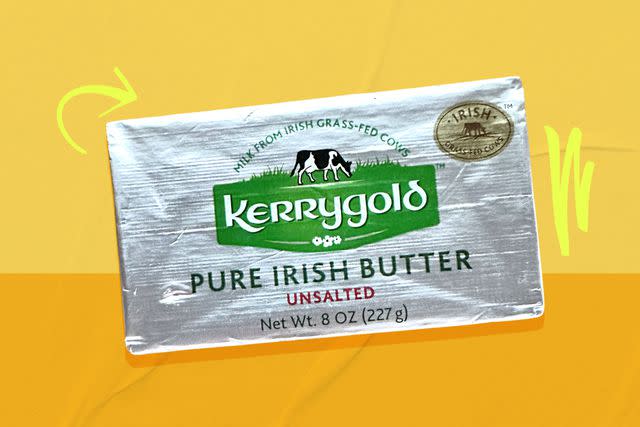Martha Stewart’s Go-To Butter Brand Is Ours Too
- Oops!Something went wrong.Please try again later.
No surprises here.

Adobe/Getty Images
Nowadays, walking down the dairy aisle at your grocery store can be pretty overwhelming. Between the cheeses, milks, yogurts, and even eggs, the choices are essentially endless.
And don’t even get us started on the different butters. Not only are there dozens of brands, but there are multiple types of butter, too. And, yes, whether you use salted, unsalted, European, or cultured butter does tend to matter.
Since there are so many options, it’s a no-brainer that every chef and home cook has their favorite butter. We recently discovered that Ina Garten loves Cabot Unsalted Butter, which also ranked in our top four in a butter taste test.
Now we’ve learned that Martha Stewart is partial to two different brands—both of which topped our butter list as well.
Martha Stewart's Favorite Butter Brands
At the 2021 Food & Wine Classic in Aspen, Stewart sat down with our sister brand to discuss her method for baking the best pies. One of the most important things, she said, is to use high-quality unsalted butter in the crust.
“A lot of people prefer using salted butter in their crust," she told “Food & Wine.” "I usually add the salt to it so I can control the salt. Some butters are really salty."
Stewart told the publication she tends to bake with two different butter brands: Vermont Creamery and Kerrygold.
Even though they’re “just butter,” Vermont Creamery’s cultured butter and Kerrygold’s Irish butter are anything but basic.
What Makes Vermont Creamery Butter So Good?

Vermont Creamery’s butter is cultured butter, which means the butter makers add live bacterial cultures into the cream mixture before churning. Then they let it ferment, which gives the butter a richer, tangier taste.
Vermont Creamery says its “rich and creamy” cultured butter has flavor notes of buttermilk and hazelnut thanks to its culturing process.
Despite Vermont Creamery operating in, you guessed it, Vermont, its butter is made in the European style—much like Kerrygold. That’s why its cultured butter has an 82% butterfat content.
The U.S. requirement for butterfat content is only 80%, while the European requirement is 82%. That 2% gives European and Irish butters their deeper flavor and extra creaminess.
Vermont Creamery’s Unsalted Cultured Butter has been recognized as one of the world’s best butters at the 2024 World Champion Cheese Contest—the same competition that named Garten’s favorite brand, Cabot, as the best salted butter maker. Stewart’s favorite placed second with a score of 99.35—only .25 points shy of first place—in the Unsalted Butter category.
Much like Stewart, bakers love using cultured butter in recipes that will let the butter’s flavor shine. That’s likely why Stewart opts for it in a flaky, buttery pie crust—but it’s also a great addition to biscuits, scones, and shortbreads.
What Makes Kerrygold Butter So Good?

Kerrygold’s Unsalted Pure Irish Butter is a tried-and-true. Our Allrecipes Allstars even crowned it as the best dairy discovery in our 2024 Golden Cart Awards.
Similar to Vermont Creamery’s butter, Kerrygold is made the European way—meaning it has at least an 82% butterfat content. The difference between the two brands, however, goes beyond the fact that Kerrygold doesn’t add cultures to its butter.
Kerrygold’s butter has a distinct flavor and deep yellow color that the brand says comes from Ireland itself. Its Irish grass-fed cows graze on the rich, sweet grass, thanks to Ireland’s rainy climate, to produce the “highest quality milk.” That milk gives the butter its creamy texture, rich flavor, and signature golden color.
Just like cultured butter, Irish butter stands out in baked goods—especially pie crusts—but it also has a delicious caramelized flavor when you use it to make brown butter for your other cooking needs.
When it comes to a Martha Stewart-approved pie, it seems you can use these two types of butter interchangeably—so, it all comes down to personal preference and what you can find in that cluttered dairy aisle.
Read the original article on All Recipes.

